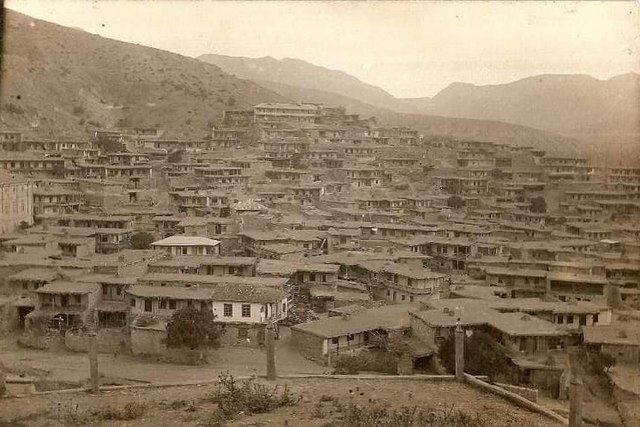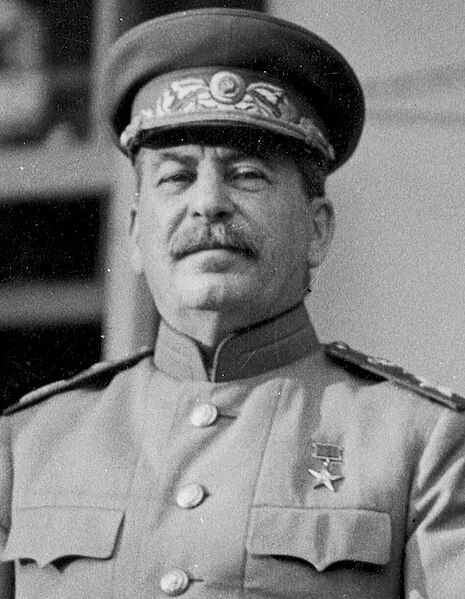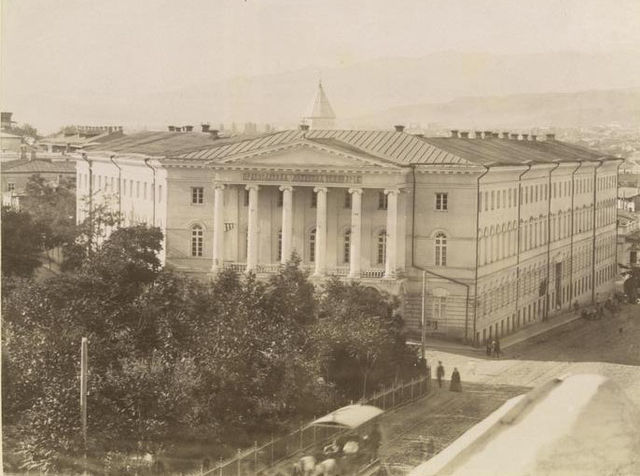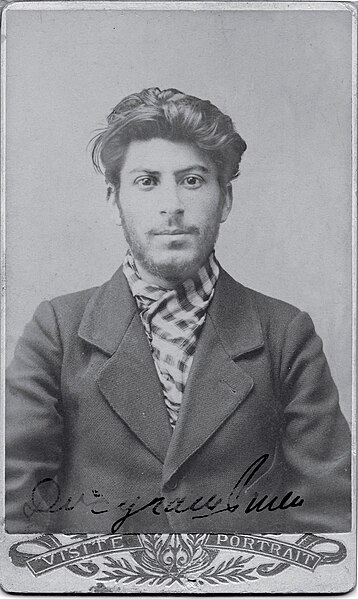Population transfer in the Soviet Union
From 1930 to 1952, the government of the Soviet Union, on the orders of Soviet leader Joseph Stalin under the direction of the NKVD official Lavrentiy Beria, forcibly transferred populations of various groups. These actions may be classified into the following broad categories: deportations of "anti-Soviet" categories of population, deportations of entire nationalities, labor force transfer, and organized migrations in opposite directions to fill ethnically cleansed territories. Dekulakization marked the first time that an entire class was deported, whereas the deportation of Soviet Koreans in 1937 marked the precedent of a specific ethnic deportation of an entire nationality.
The empty Crimean Tatar village of Üsküt, near Alushta, photo taken in 1945 after the complete deportation of its inhabitants
A train with Romanian refugees following the Soviet annexation of Bessarabia
A dwelling typical to some deportees into Siberia in a museum in Rumšiškės, Lithuania
Funeral of the deported Crimean Tatars in Krasnovishersk, late 1944
Joseph Vissarionovich Stalin was a Georgian-born Soviet politician and revolutionary who was the longest-serving leader of the Soviet Union from 1924 until his death in 1953. He held power as General Secretary of the Communist Party from 1922 to 1952, and as Chairman of the Council of Ministers from 1941 until his death. Initially governing the country as part of a collective leadership, Stalin consolidated his power to become a dictator by the 1930s. Ideologically, he formalised his Leninist interpretation of Marxism as Marxism–Leninism, while the political and economic system he implemented is known as Stalinism.
Stalin in 1943
In 1894, Stalin began his studies at the Tiflis Theological Seminary (pictured here in the 1870s).
Police photograph of Stalin, taken in 1902
Stalin first met Vladimir Lenin at a 1905 conference in Tampere, in the Grand Duchy of Finland. Lenin became "Stalin's indispensable mentor".








